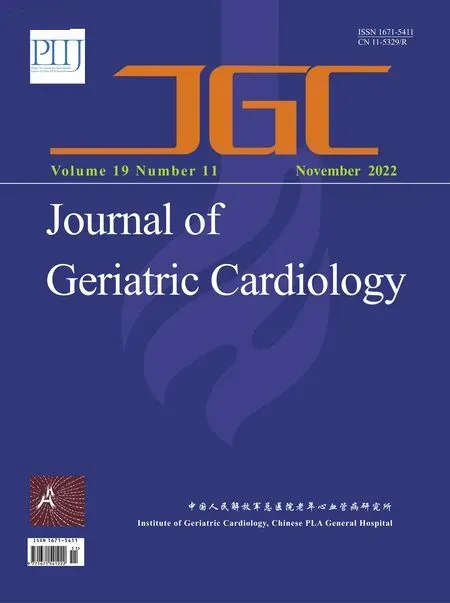Migration of intra-aortic balloon pump causing obstruction of the superior mesenteric artery
2022-12-20SharanMalkaniJoseRuizSmrutiDesaiSmitPaghdarParagPatelJuanCarlosLeoniMorenoMelissaLyleMaedehGanjiDanielYipRohanGoswami
Sharan Malkani, Jose Ruiz, Smruti Desai, Smit Paghdar, Parag C. Patel, Juan Carlos Leoni Moreno,, Melissa Lyle, Maedeh Ganji, Daniel Yip, Rohan M. Goswami,
1. Division of Transplant Cardiology, Mayo Clinic, Jacksonville, FL, USA; 2. Division of Cardiology, First Coast Heart &Vascular, Jacksonville, FL, USA
Axillary intra-aortic balloon pump (IABP)used has increased in the recent few years after UNOs allocation system changes.IABP’s design and counterpulsation mechanism is highly regarded for its safety profile, simplicity and relative ease in management and care. However,despite continuous innovative efforts, the potential for complications still exists. The Benchmark registry is widely regarded as the tool for monitoring the evolving practice of IABP. The most common complications reported are balloon perforation, bleeding, migration, limb ischemia. Despite continuous innovative efforts, the potential for complications still exists. We present a case that brings to light a life-threatening complication which can arise during utilization of a IABP in patients waiting for heart transplant. We demonstrate a case of IABP migration and obstruction of the superior mesenteric artery causing severe abdominal pain secondary to bowel ischemia.
A 55-year-old male with a history of ischemic cardiomyopathy who presented with volume overload.He was started on diuretics for medical optimization but did not respond appropriately with worsening transaminitis and kidney function. Patient underwent right heart catheterization that showed elevated right sided filling pressures with CVP of 17 mmHg and elevated left sided filling pressures with a PCWP of 29 mmHg. Cardiac output was 3.7 L/min and CI was 1.7 L/min per m2and he was started on Mirinone for inotropic support given concern for cardiogenic shock. Despite medical optimization and inotropic support, the patient continued to deteriorate. He received an axillary IABP as bridged to transplant. While waiting for a heart transplant he developed acute abdominal pain. Given his pain was out of proportion to the physical exam, we elected to proceed with an abdominal X-ray and CT (Figures 1 and 2) which revealed that the IABP had migrated into the mesenteric artery. The IABP was retracted at the bedside 3.5 cm and position verified on X-ray.Patient had resolution of abdominal pain thereafter.Patient had no further complications and was successfully transplanted later during his hospitalization.

Figure 1 CT abdomen demonstrating IABP(arrow) in the mesenteric artery.

Figure 2 Abdominal X-ray demonstrating tip of the intra-aortic balloon pump (arrow) migrating into the mesenteric artery.
The IABP has the potential to migrate and lead to complications. Depending on the surgical technique, migration can lead to vascular complications such as injury to the superior mesenteric artery as seen in our case with the axillary approach. Disproportionate abdominal pain may be the first clinical symptom of IABP displacement or embolic phenomena. Fortunately, radiopaque markers in the IABP allow for proper identification after placement.Having awareness of migration can allow for early diagnosis of a life-threatening complication in a patient with cardiogenic shock. Increased use of axillary support in patients waiting for organ transplantation may lead to increased rates of uncommon complications such as this. Our case highlights the uncommon complication of axillary IABP migration into the superior mesenteric artery and demonstrates early intervention can improve outcomes.
杂志排行
Journal of Geriatric Cardiology的其它文章
- Review on the management of cardiovascular risk factors in the elderly
- Observation of performance measures of STEMI in elderly after implementation of an updated protocol: results from a single center without coronary interventions
- Device-based neuromodulation for cardiovascular diseases and patient’ s age
- Methodology in coronary artery bypass surgery quality assessment
- Small-molecule 7,8-dihydroxyflavone counteracts compensated and decompensated cardiac hypertrophy via AMPK activation
- Validating the accuracy of a multifunctional smartwatch sphygmomanometer to monitor blood pressure
